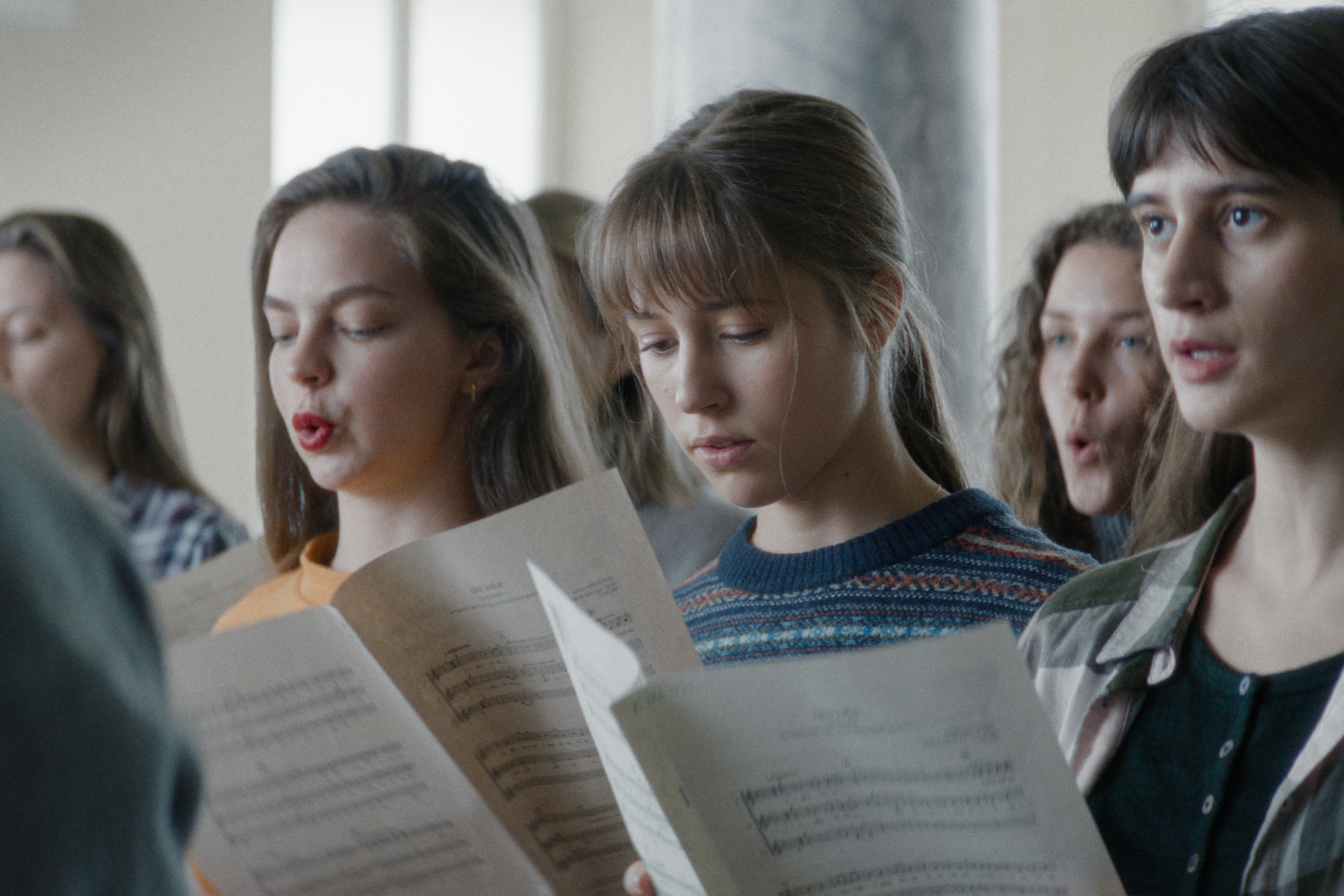Little Trouble Girls (2025)
The film begins with a sensory confrontation of hearing; a chain of whispered, prayer-like murmurs creates a mysterious, almost sacred atmosphere. A voice emerging from the inner world of a young girl transforms, under the cold light of the rehearsal hall, into an image: a painting on a simple ceramic tile showing red lips. At first glance, it seems to depict the beauty of femininity, yet beneath the surface lies the symbolic mouth of sexual awakening. Around it, tools of labor and war intertwine with signs of male sexuality, an emblem of a long history that has confined female desire within the frame of work and violence.
Director Urška Djukić, with remarkable precision, employs sound, breathing, and rhythm as the primary language of her film. The breathing and vocal exercises inside the Catholic music
school , dry, ritualistic, and controlled, become less an artistic education and more a form of discipline. Playing the notes correctly matters more than knowing one’s own body. The body must obey the voice, not generate it. Yet from within this restraint, the hidden pulse of the body begins to surface.

The extended close-ups of the girls’ lips during opera practice are among the film’s most striking moments. Lips oscillating between prayer and desire, trembling breaths, and the focus of the camera on the rhythm of exhalation merge the sacred with the sensual. In these shots, sound itself becomes touch, and musical training transforms into a subtle exploration of bodily awakening.
Gradually, the film captures the tension between purity and desire within a collective space: the silent rivalry between two girls, the restrained glances, and the presence of a young laborer whose physicality evokes the body of Christ, a human, earthly form within divine faith. This image creates a poetic contradiction between worship and falling in love, between holiness and carnal longing.
At the film’s emotional climax, male workers accidentally break a statue of the Virgin Mary while repairing the prayer hall. A crack appears between faith and the flesh. The girl approaches the broken statue and, with a long and lingering kiss, erases the line between devotion and desire. That kiss becomes a fusion of prayer and sin, of the sacred and the human. Faith, body, and sexuality melt into one another, drawing a delicate line between guilt and grace before the viewer’s eyes.

The poetic cinematography of Lev Predan Kowarski, using cold light and tightly framed compositions, turns the oppressive school into a gray monastery. At its center shines Jara Sofija Ostan, whose luminous performance carries the film’s emotional weight. In silence, between discipline and yearning, she charts the path of awakening through her eyes and the subtlest movements of her lips. In the final sequence, she condenses the film’s emotional core into a few minutes of pure cinema.
In the closing long take, filmed without a single cut, she holds a cluster of grapes and slowly eats it. Every shift of her face, frown, reverie, faint smile, becomes a journey from guilt to serenity. The grapes, in Christian symbolism, signify purification and redemption; here they merge with her inner calm and the tactile grace of her body. This luminous ending gathers the entire sensorial and formal essence of the film into one breath: silence, faith, desire, and release.
Little Trouble Girls is a meditation on body and belief, on sound and silence, on sin and salvation, a film that, within the confined world of Catholic order, reveals the birth of female consciousness through lips, prayers, and red grapes.


